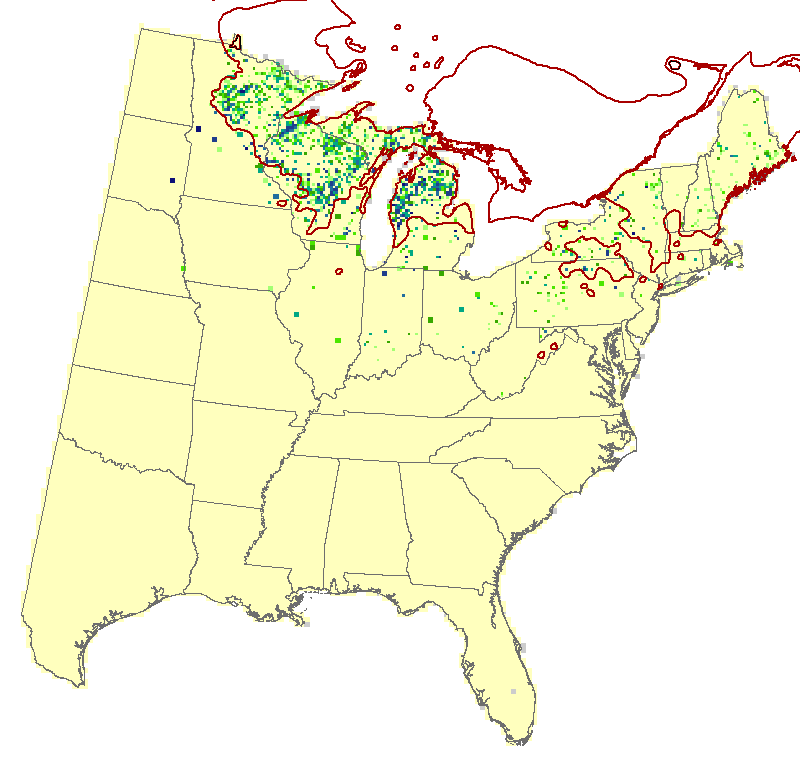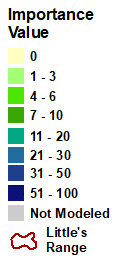red pine (Pinus resinosa)
Model Reliability: Medium
| GCM SCENARIO | % Area Occ | Ave IV | Sum IV | Future/Current IV |
|---|---|---|---|---|
| Actual | 4.9 | 12.7 | 18296 | N/A |
| RFimp | 7.8 | 6.8 | 15458 | 0.84 |
| CCSM45 | 9.3 | 5.4 | 14722 | 0.95 |
| CCSM85 | 11.5 | 4.8 | 16280 | 1.05 |
| GFDL45 | 11.8 | 4.8 | 16512 | 1.07 |
| GFDL85 | 11.8 | 4.5 | 15686 | 1.01 |
| HAD45 | 11.1 | 4.9 | 16161 | 1.05 |
| HAD85 | 11.1 | 4.6 | 14787 | 0.96 |
| GCM45 | 12.3 | 4.4 | 15832 | 1.02 |
| GCM85 | 12.3 | 4.3 | 15605 | 1.01 |
Regional Summary Tree Tables
Summaries for tree species are available for a variety of geographies, in both PDF and Excel format. These summaries are based on Version 4 of the Climate Change Tree Atlas
Interpretation Guide
Red pine is quite abundant in the Northwoods (narrow-3.8% of area, sparse, and high importance where found), and also spattered elsewhere in ther north, but it is not particularly adaptable to climate change. We modeled no change in suitable habitat, and an overall assessment of poor capability to cope with a changing climate. SHIFT shows a lot of infill.
Family: Pinaceae
Guild: pioneer, dry-site intolerant
Functional Lifeform: medium-size evergreen conifer
| 3.9 | 0.86 |
| -2.42 |  |
MODFACs
What traits will impact red pine's ability to adapt to climate change, and in what way?:
Primary Positive Traits
Primary Negative Traits
Insect pests Shade tolerance Dispersal



